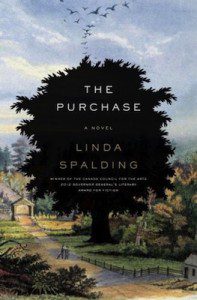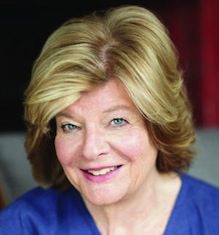
Now that Nobel Prize has been justly awarded to Alice Munro, perhaps English readers around the world will pay more attention to the fact that some great literature is coming out of Canada. Quieter perhaps though no less potent than its American equivalent, the finest Canadian writing is often characterized by a lyrical strength that can be emotionally shattering. The Outlander, a 2008 novel by Torontonian Gil Adamson, is a tour de force that takes place both in Canada and in the American west in the early 20th century. At the same time The Outlander appeared, Adamson’s publisher brought out a fine American novel set in a similar time frame: Ron Rash’s Serena, which (in the US) enjoyed a broader and more clamorous critical reception. Luckily, Ron Charles of The Washington Post (whom I nominate as the finest fiction connoisseur in America) recognized the extraordinary achievement of The Outlander and made it one of his three favorite books of 2008.
The Purchase, by Linda Spalding, which won Canada’s Governor General’s Award for Fiction in 2012, shares many of the strengths of The Outlander: narrative daring; many passages of pure poetry, all of it belied by a touching modesty. Although Spalding (who is married to the novelist Michael Ondaatje) has lived in Canada for thirty years, she is American and her book could not be any more American. Her novel claws at the deepest nerve of American history: our shameful practice of keeping (and for the most part mistreating) slaves. Reading Spalding’s heart-breaking description of a slave auction, one cringes at the oxymoron of blinkered slave owners who on one hand consider themselves abiding Christians, and on another bridle against the biblical dictum of the Apostle Paul, who said there is neither a slave nor a master class in Christ, since all are equal. Slave-owning Christians who lived in the era of Spalding’s novel claimed that surviving in a largely agrarian world hinged on procuring “free help.”
The novel begins in 1799 and follows the travails of Daniel Dickinson, an abolitionist forced to relinquish his place in a tightly knit Quaker society in Pennsylvania and decamp with his young wife and five children, horses and cow for parts unknown. We quickly realize that Dickinson has been named in the book’s dedication (to Spalding’s late brother Skip) as her great-great-great-grandfather who, it turns out, was shunned by his Quaker brethren to the point where he had to flee Pennsylvania. This ostracism portrayed in the novel is the result of Daniel’s decision to wed Mary, a 15-year-old Methodist girl, who has come to help manage the household and children as his wife, bed-ridden, lies dying.

Spalding’s point is that lives such as these were turned upside down for the most minor infractions of faith and duty. And while many of the principles of Quakerism (pacifism among them) are admirable and even modern, we know from early on that they will not survive outside the fragile environment of the meeting house, and that Daniel (and especially his children) will need to brook many of these hard and fast rules to hold any chance of flourishing as farmers on the frontier. And they do alight on the frontier: Jonesville, Virginia, at the Cumberland Gap, the far western fringe of where the United States ended and the holdings of the French and the Spanish began. It’s understandable that this edge of America would cling even more fiercely to: slavery and vigilantism.
In short, Spalding presents here the recipe for another American Tragedy whose first major ingredient is the aforementioned slave-selling part of a general auction that Daniel, who knows nothing about farming, attends for the purpose of buying a plow from a dismantled estate.
After watching one harrowing “negro” sale after another, in which tightly knit families are wrenched apart, Daniel watches a boy somewhere between the ages of 9 and 13 climb up on the stage from where “he stood looking down at the pink and white faces below as if he hoped to lock eyes with the one person in the crowed who dared to take charge of his fate—although if his fate can be charged to anything, thought Daniel, it can only be to God as He speaks through each one of us.” Then a moment of divine intervention: Daniel feels his hand shoot up to bid the exorbitant price of $400 set by the auctioneer. He had no intention of buying slaves; Quakers are not allowed to own slaves. But Quakers are also admonished from negotiating and from bearing witness in a court of law. The crowd at the auction knows this and presses Daniel to make “the purchase,” to forfeit all the money he has brought with him as well as his favorite horse as collateral.
The lad is called Onesimus, the biblical name of the slave owned by Philomon. Paul tries to convince Philomon to set Onesimus free and in so doing save his own existence. Spalding turns the parable on its head in her early 19th century yarn. Daniel is compelled to take on a slave with the idea that Onesimus will work and help him make the money to buy his horse back—and then be set free. But life on the Cumberland frontier intercedes, as Onesimus gets injured and healed by a black woman who lives on a nearby farm and who then becomes the mother of his child and flees her hardscrabble life to live with the Dickinsons. This rift causes outrage in Jonesville. More harrowing events soon follow. And yet the abiding drama of the novel is Daniel trying to survive as an unschooled farmer while showing fidelity to the principles of his Quakerism and lying to himself as his beliefs unravel.
One pillar of strength in the novel is Bett, the woman who heals Onesimus and becomes the mother of his child. Bett’s ability as a herb gatherer and healer is aped by Daniel’s oldest daughter, Mary who, under Bett’s tutelage (because blacks are not allowed to attend to whites) goes around Jonesville healing ailments even the local doctor cannot fathom, much less cure. The sui generis spiritual framework of Spalding’s black characters casts a powerful spell on the Dickinsons. Sadly, although they yearn to set their black brethren free, each member of the Dickinson family has come to rely on them so much that when the time comes, they have trouble letting go. That reluctance, based on personal need, is the powerful yet tragic keystone in the architecture of Spalding’s novel.




